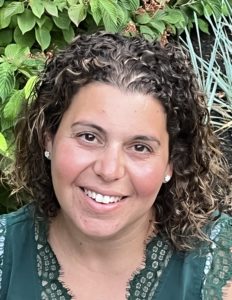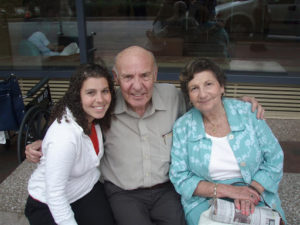
Even years before the pandemic, finding community and warding off isolation was hard. It’s something Stacy Seltzer learned firsthand.
The founder of 3G Philly, an organization connecting the grandchildren (or third generation) of Holocaust survivors and advocating for Holocaust education, Seltzer, 38, had trouble bringing a group of Philadelphia 3Gs together when she moved to the area in 2012, despite co-founding Boston 3G a few years prior.
The problem wasn’t finding young Jews with whom to gather; it was the life stage the cohort was in: Many 3Gs, Seltzer included, had young children and didn’t have the same spontaneity or bandwidth to meet up with a group for a weekend gathering.
“Having the time to have a full-time job, do a full-time nonprofit, raise a family — it’s finding that time in your life that you have the capacity to give to it and that you have the energy to be able to attend these events,” Seltzer said.
While the early days of COVID disrupted the lives of so many, it also allowed 3G Philly to begin in earnest.
“Everything started being virtual,” she said. “So you didn’t have that same concern about, ‘How are we going to get everybody in a central location?’ You were able to virtually get everyone together.”
Since its April 2021 founding, 3G Philly has amassed 215 members on its mailing list and nine board members. The organization has partnered with the Holocaust Awareness Museum and Education Center and expanded 3GNY’s We Education (WEDU) education initiative to Philadelphia, providing training to descendants of Holocaust survivors on how to share their loved ones’ stories with young audiences.
Seltzer has spoken to many Philadelphia audiences about her grandparents’ Holocaust survival story. Seltzer’s grandmother Esther Bratt was born in Vilna, Poland, and was sent with her parents to live in the Vilna ghetto before being forced to work at the HaKapeh Labor Camp, where she sewed socks for Nazi soldiers. The camp was eventually liberated, and the family immigrated to the U.S. in 1946, where Esther Bratt met her husband, Sidney Bratt.
Sidney Bratt’s Guttstadt, Germany, hometown synagogue was destroyed in Kristallnacht in 1938, and his parents later arranged for him, the eldest of four children, to flee to England via Kindertransport. He reunited with his father after the war, and the two came to America in 1948.
The couple eventually settled in Reading, about an hour away from Seltzer and her family, who live in Blue Bell and attend Tiferet Bet Israel.
Originally from Allentown, Seltzer attended Muhlenberg College and met her husband at Camp Ramah in the Poconos. They moved to New York after college in 2006 and immediately joined 3GNY. When they moved to Boston a year later, they created Boston 3G hoping to recreate the warm Jewish community they found in New York.
Boston 3G’s first event took place in the living room of the Seltzers’ apartment; they ordered pizza, and more than 20 descendants of Holocaust survivors showed up.
“We just went around and shared our stories,” Seltzer said. “And that ended up turning into this amazing, amazing group. We had various events; we had probably several hundred people on our mailing list; we were [featured] in The Boston Globe.”
As 3GNY, Boston 3G and 3G Philly continue to grow, Seltzer is working with the various groups to create a national umbrella organization to better oversee programming and hold larger-scale conferences, though the individual branches of the organization will remain autonomous.
As much as Seltzer is looking outward to expand 3G, she’s putting just as much effort into furthering her mission of Holocaust remembrance within her own home. Seltzer has three children — ages 9, 7 and 4 — and the oldest one is already taking on the responsibility of learning about the Holocaust.

The work of remembering and sharing the stories of the older generation is getting more challenging. The 3G generation is a sweet spot: Many 3Gs enjoy close relationships with their grandparents and learn their stories after the survivors have had time and space away from the trauma of the Holocaust. Survivors may not have been as forthcoming with information about the Holocaust to their own children as they were to their grandchildren. Great-grandchildren may not be as close with their survivor relatives, or may just not have as much time with them as their parents did.
“The 4Gs will have a similar connection, where … if they’re fortunate enough to hear it from their great-grandparents, then they can continue to pass down these very important stories and make sure that they’re not forgotten,” Seltzer said.
Though heavy and important work, it’s rewarding and grows optimism within the Jewish community for a better future, Seltzer believes.
“It doesn’t all have to be sad and negative,” she said. “It’s about hope, and it’s about taking away the hatred of the world.”






